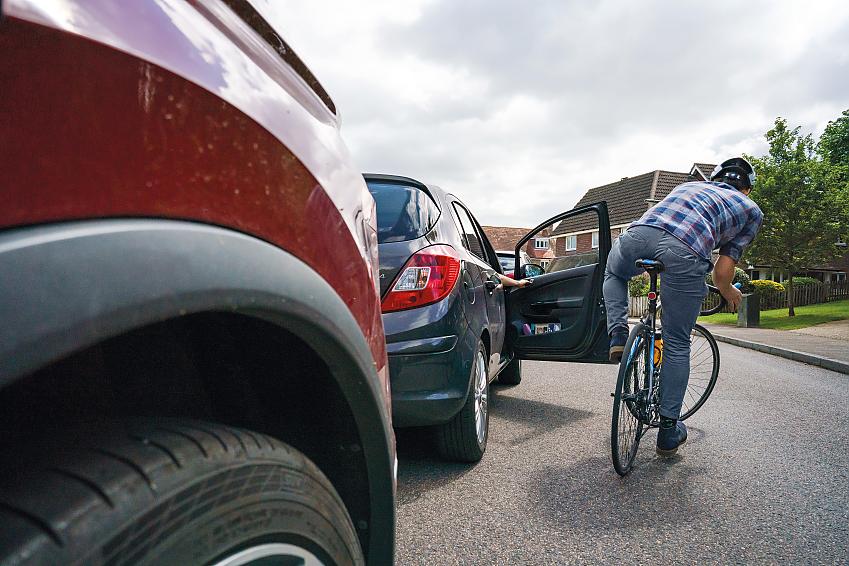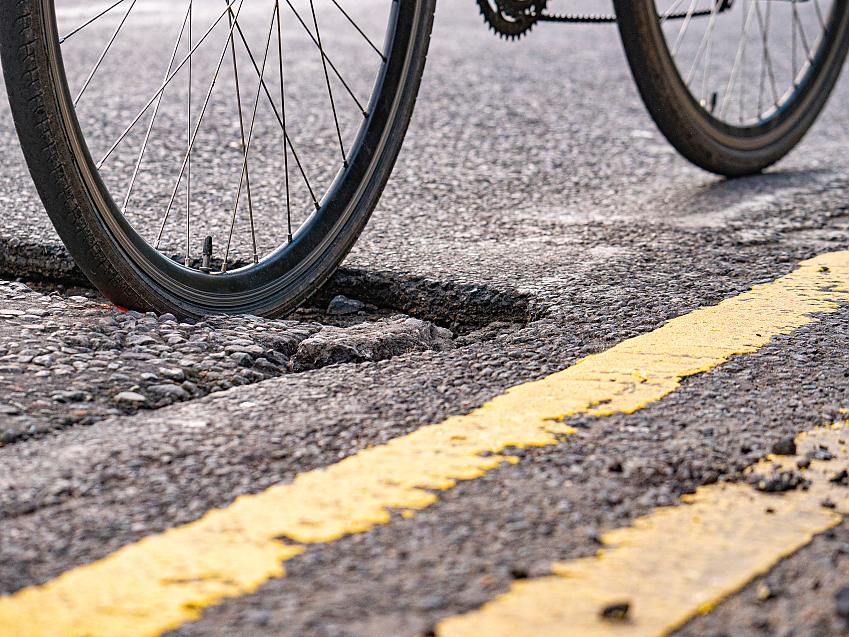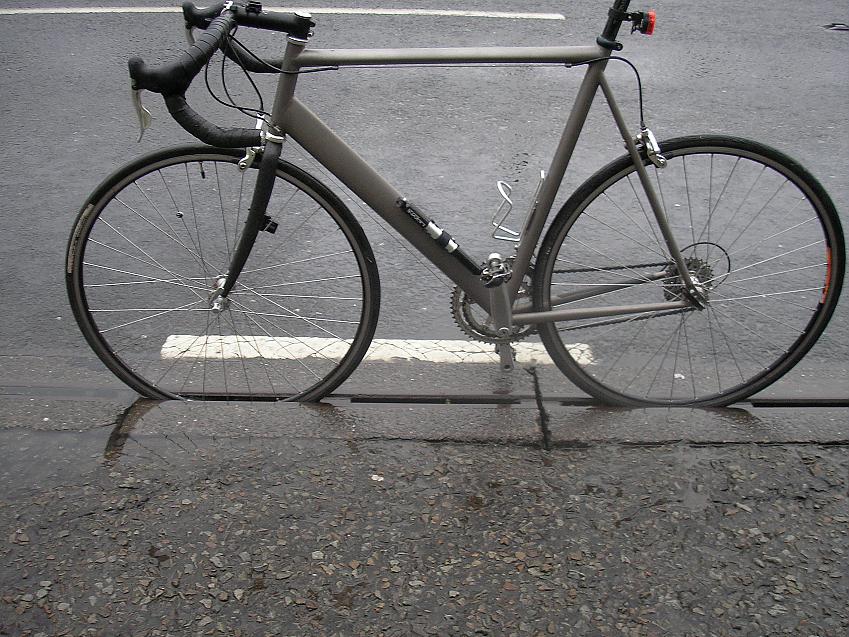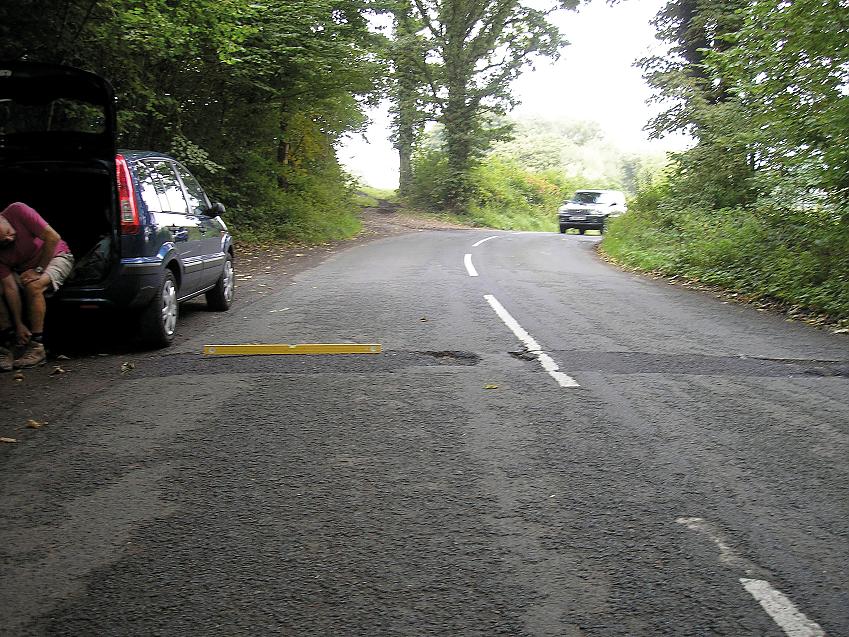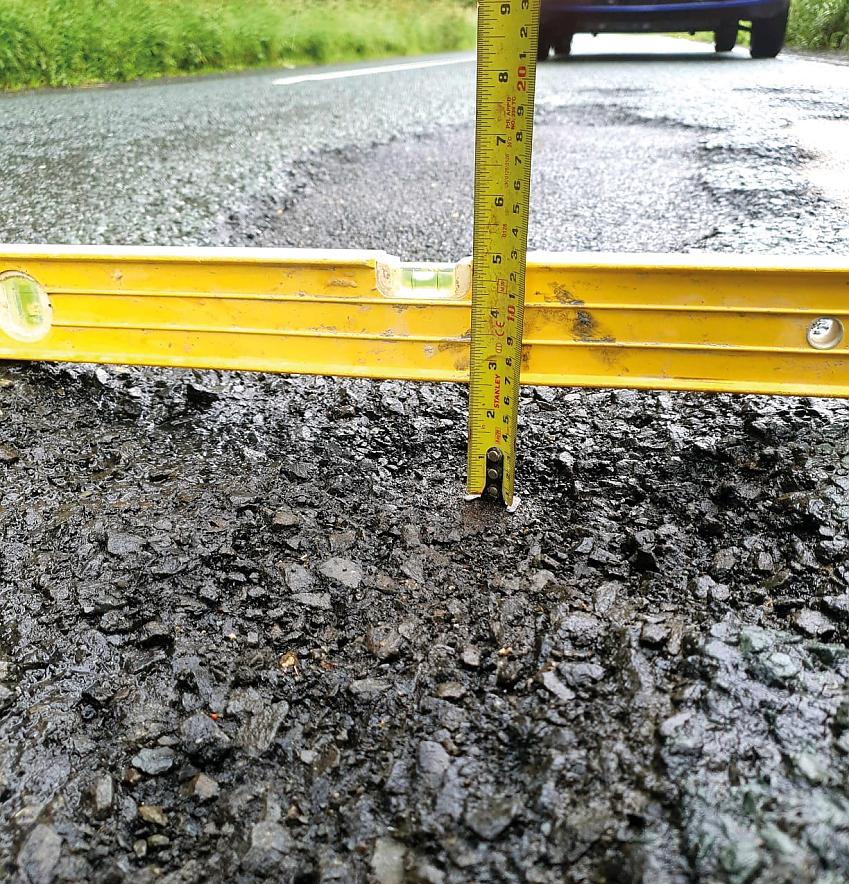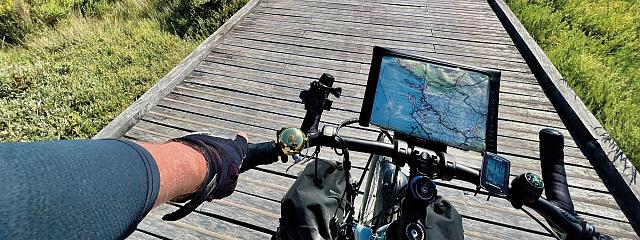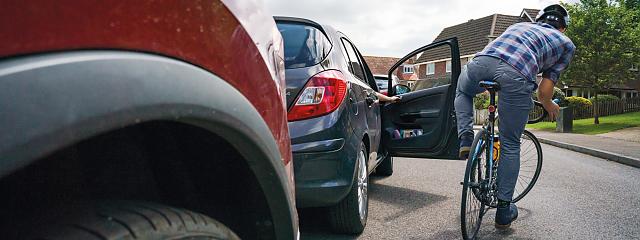
What to do if you have a road incident while riding your bike
What to do if you have a road incident while riding your bike
Any road incident that damages you or your bike will tend to happen fast. There’s little time to react, let alone think. Afterwards, however, you need to be methodical. It’s easy to let adrenaline take over and erupt in anger or insist you’re fine and jump back on the bike like a pro rider after a spill in the peloton. Don’t. Get to a place of safety and take a breath. Check yourself first and your bike second. Follow the advice in this article. If you can’t remember it, just call the Cycling UK Incident Line on 0330 107 1789. That’s the most important takeaway from these pages.
Now let’s get into the details. Crashes on the road (excluding those caused in sporting events and by defective equipment) normally fall into one of two categories. The first is caused by the fault of a third party – for example, a driver, a pedestrian (with or without a dog), a horse-rider or another cyclist. The second is caused by a defect in the highway, such as a pothole. These are not accidents, which are chance events without identifiable cause. They are collisions or crashes attributable to specific circumstances.
If you sustain losses – including personal injury, damage to property or financial losses – you can bring a claim for compensation. To do so you must establish the following:
- The incident occurred no longer than three years ago (unless the victim is a minor)
- That a duty of care is owed by the third party
- That there has been a breach of that duty through negligence or by a failure to comply with a specific law
- That there’s a causal link between the breach of duty and the injury and loss sustained
Collisions: Carelessness & claims
We are owed a duty of care by all other road users. The standard of care owed is that which should be exercised by a reasonably careful person. We are all obliged to avoid posing a reasonably foreseeable risk of harm and injury to others. Failure to do so is negligence.
Negligence is a simple test of carelessness. If, on the balance of probabilities, an incident that could have been anticipated results in injury or loss, the careless individual may be liable and culpable. The Highway Code is frequently cited in support of allegations of negligence.
The standard of proof in civil cases is different from that in criminal cases. Criminal prosecutions must prove guilt “beyond all reasonable doubt”. In civil cases the claimant need only prove “on the balance of probabilities” (51% or more) that there has been negligence. In the event of a driver-cyclist collision, even if the police or Crown Prosecution Service decide against prosecuting the driver, the cyclist is not precluded from bringing a civil claim for damages.
However, a successful criminal prosecution shifts the burden of proof: the erring party is required to show that the conviction is not relevant to the issue of negligence. So it’s better for you if you can get the police to investigate an injury collision. Their involvement may prevent procrastination by the third party’s insurer. Video camera footage is a great aid to a possible prosecution and for any civil claim (see sidebar).
Highway defects: Inspection rules
A highway authority will be in breach of its statutory duty, as defined by S41 of the Highways Act 1980, if it fails to maintain the road to a reasonable standard. An authority has a duty to inspect the roads in its area at regular intervals to ensure that the surface is safe and free from defects likely to present reasonably foreseeable hazards to all road users. Inspection frequency is linked to the status of the road. For example, A-roads are checked more often than country lanes.
Road defects that aren’t dangerous to motor traffic can still present a clear hazard to cyclists. Authorities must take reasonable precautions to address them. Note well that word ‘reasonable’. If the highway authority can prove that a regular system of inspection (appropriate to the road category) is in operation, and that the defect arose between such inspections, the statutory defence provided by S58 of the Highways Act may permit it to escape liability.
Insurers’ own records show that only 22% of highway defect claims result in a payment. That’s a reflection of the technical details and specialist knowledge required to attack the statutory defence. So it’s worth getting informed advice before reporting a defect.
Since 2016, the definition of a dangerous defect has been left to individual authorities; specific dimensions aren’t provided in the National Code. As a rule of thumb, a dangerous pothole is at least 40mm deep and 300mm across. That doesn’t address edge deterioration, longitudinal cracks, level differences, depressions, utility covers, gulley covers, protuberances above the surface, or reduced friction, or snow and ice, but it’s a start.
What to do after a collision
If you sustain personal injury or damage to property in a crash that has occurred due to the carelessness of a third party, you’ll need to report it to the police, along with the relevant details from the third party. Images or sketches of the location may also be useful.
It is obligatory to report any collision involving injury to the police as soon as possible, and in any event within 24 hours. This also applies to non-injury collisions if the statutory details are not provided at the scene. Those statutory details are: the full name and address of the driver (and the registered keeper, if different); the vehicle registration number and the insurance particulars.
A first name and a mobile number are not enough. If a driver is evasive and doesn’t provide all the details, it may be because the car or driver is on the road illegally. Report the incident to the police, along with a description of the driver. If a driver fails to stop, or stops briefly and leaves without providing details, it’s a criminal offence.
If the police are called to the scene, their duties will be: to investigate any criminal offence that may have been committed; and to record any facts material to the prosecution of an offender. The information gathered by the police may be incorporated into a report available to the parties’ legal representatives once any criminal proceedings have been concluded. However, it is prudent for you or your companions to record as much detail as possible as well – including the collision reference number and the ID of the officer, if the police attend.
Irrespective of whether the police attend the scene of an accident, record the following if you can:
- The name, address and a description of the driver (noting that drivers have been known to swap places with a passenger)
- The registration number, make, model and colour of the other vehicle(s) and their post-collision position
- Whether the vehicles involved were displaying any lights and indicators and whether any warning had been made (horn or lights)
- The identity of any motor insurers of any parties involved in the accident
- Witness names and contact details
- A sketch or some photographs of the collision location, showing road names/numbers, direction of travel, relevant measurements, road furniture, skid marks, glass or other debris, and the position of the vehicles after impact
Some of this duplicates the statutory details above but the more information you have, the better. If you lack the insurance details (because the driver didn’t stop or provide them), the Motor Insurers Database will provide insurance particulars for a £10 fee, if given the date of the collision and the vehicle registration number. This would be done by Cycling UK solicitors, if instructed.
While it may be possible to trace elusive drivers, the same can’t be said for e-scooter riders, pedestrians or other cyclists. Identifying the other party in this situation is vital. If they flee the scene, any chance of redress is gone. Camera footage may assist in identification, but probably only if there’s a possible criminal offence or a serious injury is caused.
As a recap, here’s a post-collision to-do list:
- Stay calm and stay safe
- Obtain names and addresses of the driver and witnesses
- Note the precise point of impact and mark/photograph it
- Record the post-impact position of vehicle and bike, including tyre marks or debris on road surface
- Report it to the police within 24 hours and retain the incident number
- Consider medical attention.
- Retain your bike and kit in their damaged state
- Seek advice from the Cycling UK Incident Line
What to do after a crash caused by a road defect
The specific defect responsible for the crash must be documented. Images must be informative and, in the absence of measurements, contain something of known dimension for comparison.
There is a difference between claims brought under the ‘failure to maintain’ provisions of the Highways Act and those predicated on an engineering shortcoming – for example, a drainage channel laid into the road surface parallel to the direction of travel (see above). The latter case is decided on reasonable foreseeability of dangerousness and the bar is set pretty high!
As soon as practically possible after a crash, visit the scene and photograph the defect from your direction of travel, showing where it’s located on the road (see photo, top right). It’s a good idea to take your bike, then fit its wheel into the defect and photograph that for context.
Then, keeping safe, do a spot of pothole profiling. Put a straight edge across the length and breadth, and measure down to the base. Photograph the tape/ruler so that the depth may be seen (see the photo below). This must be done promptly, otherwise the highway authority will assert that the defect has worsened in the interim. They might even repair it.
A common response when a defect is reported will be that the authority had inspected the road regularly and, as the defect wasn’t there at the time of the last inspection, the authority won’t accept liability. That standard tactic presents a conundrum. Reporting the defect immediately should lead the authority to repair it promptly, which is obviously better for other road users. Sadly, it might not help your own claim, tempting some claimants to adopt a ‘wait and see’ approach to check if the council does actually inspect or repair the road as it ought.
A recent case involved a cyclist whose crash, caused by a small crater, was witnessed by a fire crew. After providing assistance, they immediately reported the defect to the council, who repaired it before the victim was out of A&E. The pothole repair crew conveniently did not photograph or measure the defect, and the council’s defence was that the defect wasn’t dangerous.
Victims shouldn’t be in a position where they have to choose between what’s best for other road users and what might help their claim. However, if your priority is pursuing a claim rather than getting the pothole fixed, one option is to record all the information above but then not report it immediately. You can then monitor developments over the next three months or so to see if any inspections or repairs actually happen. If they do not, then the authority will struggle to claim its statutory defence.
Don’t delay in seeking specialist legal advice, however. Do that as soon as possible after the incident. It is preferable to use a firm of solicitors with a track record in cycle claims. As a Cycling UK member, you have access to exactly that through the Cycling UK Incident Line. That number again is 0330 107 1789. It’s worth putting in your phone’s contact list right now.
Caught on camera
Camera footage is increasingly useful in both criminal and civil cases. It can also be used to report careless, dangerous and downright incompetent drivers even where no collision has occurred.
If you have footage of an incident, make sure it won’t be overwritten. Some cameras film on a loop and you’ll need to press a button or switch the camera off entirely for the footage to be saved. At the earliest opportunity, back up the footage to your home computer. Then back up that so you’ve got a copy somewhere other than your camera.
If the police are involved in investigating an incident, they may ask you if you have video footage. If they don’t, ask them how best to provide it. Don’t give the police your only copy of footage. Upload it or (if they prefer, say, a DVD) give them a copy.
You can upload footage of careless or dangerous driving even if the police are not initially involved. Start with the force’s web pages and look for the section dedicated to the upload of material. It’s probably called OpSnap and will require contact as soon as possible, as the police (under Notice of Intended Prosecution provisions) must notify the registered keeper within 14 days.
Another way to upload footage is via the National Dashcam Safety Portal.
Component failure
Sometimes a bike component will suddenly and unexpectedly fail. We’re not talking about punctures or the odd broken spoke but things like a fork steerer shearing or a frame breaking, either of which can cause serious injuries. If you want to make a claim, here’s what to do:
Keep the bike in its damaged state, pending advice
- Try to collect any debris, such as sheared bolts
- Photograph the scene (excluding highway defects)
- Write down what you recall happened as soon as possible
- Photograph the complete bike even if, for example, the fork is no longer attached to the steerer
- Photograph damaged or broken parts, focusing on any failure surface
- Do not be persuaded to part with any failed component to the supplier or manufacturer, pending advice
- Visit the Cycling UK Forum to check for any identical failures or recalls
- Contact the Cycling UK Incident line and be prepared to upload images, preferably individually
At some point you may to send off your bike for inspection but wait for advice before you do so. You will need to have a good idea of the bike’s worth. Other useful information includes: initial purchase documents; a list of upgrades and maintenance; a mileage log or ride diary; the date(s) of intervening mishaps, if any occurred, and details of what was done about it (or them).






